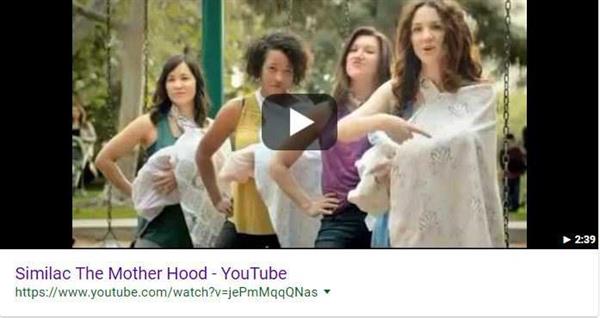Why These Marketing Videos Went Viral

So what does it take for a marketing video to go viral? There's a science behind sharing according to this blog post, which states that after the analysis of some 430 billion video views and 100,000 consumer data points it was found that the two most powerful drivers of viral success are (1) psychological response (how the content makes you feel) and (2) social motivation (why you want to share it).
With these two drivers of viral success in mind, let's examine what made the following marketing videos so popular.

With more than 8 million views and thousands of social posts and shares, Similac's video of parents at a park hit a nerve with mothers and fathers. The content made them feel connected (because the video shows each group - like working moms, stay at home dads, etc. - judge one another until ultimately coming together to get a 'runaway' stroller) and it motivated them to share (likely because they have felt judged at some point and this is a way to passively share that experience). As for brand messaging, there is a reported stark decline in formula usage among new mothers (there is a certain stigma - and even shaming - to using it) and Similac, a maker of formula, is saying however you choose to raise your child (including the use of formula), we're all parents trying to do right by our children.

If there was a viral video hall of fame, Dollar Shave Club would be one of the first inductees. The video launched a successful run for the company (which is continuing after its $1 billion acquisition) because it hit its target audience (young males) and was hilarious. It established a connection with its prospective members by offering a clear and immediate value proposition (for a $1 a month they send high-quality razors) and giving viewers a reason to share (humor). Some five years later, the video has more than 24 million views and is considered the catalyst for the company's success. Of course, however, companies have to deliver on their promises (video or otherwise) and Dollar Shave Club was able to capitalize on being an early adopter of the subscription-based model and use methods over the years to "reduce churn by reactivating customers who had canceled their subscriptions." (Read more here by opening this PDF.)
 It's difficult for many of us not to relate or connect (a reason for sharing) to something Disney whether it reminds us of our childhoods or our kids. Disney set up shop in a mall to see how unsuspecting passersby would react when their shadow resembled a Disney character. The video was viewed more than 5 million times on YouTube alone and shared nearly half a million times on Facebook. People connected to the nostalgia and the environment (the mall) and shared it likely for those very reasons.
It's difficult for many of us not to relate or connect (a reason for sharing) to something Disney whether it reminds us of our childhoods or our kids. Disney set up shop in a mall to see how unsuspecting passersby would react when their shadow resembled a Disney character. The video was viewed more than 5 million times on YouTube alone and shared nearly half a million times on Facebook. People connected to the nostalgia and the environment (the mall) and shared it likely for those very reasons.

A fireman saving a kitten - we've heard the tale so often but GoPro shared the scenes in its video that was viewed more than 34 million times on YouTube and shared on social more than 1.3 million times. How are people using your product or service in real life? That's where the connection lies and the reason for sharing begins.

With more than 15 million views, Puppyhood presented by Purina (dog food) and BuzzFeed is a funny parody of a person incorporating a roommate into their home - with the roommate being a puppy. A lot of people can connect with the woes of having a roommate (and a puppy) and it's presented adorably (a reason to share).
Is it difficult to replicate what the brands have done in these viral videos? Of course, but when planning any video campaign, think about the connection that people will have with it and the reasons they would have for sharing. If the video is littered with promotions and branding, the campaign will not have the effect the company desires (if achieving awareness is the aim).
What do some common viral marketing videos have in common?
- They show their products in real life, in a real way
- They connect to their target demographic's pain points
- They trigger an emotional response
- They run about 1-3 minutes
- They are hosted in a variety of spots: YouTube, website, social, blog (note: make sure all offline and online properties and staff can support an influx in traffic if the video does take off)
- They include minimal branding with a focus on the message

Subscribe to Our Newsletter!
Latest in Social Media










